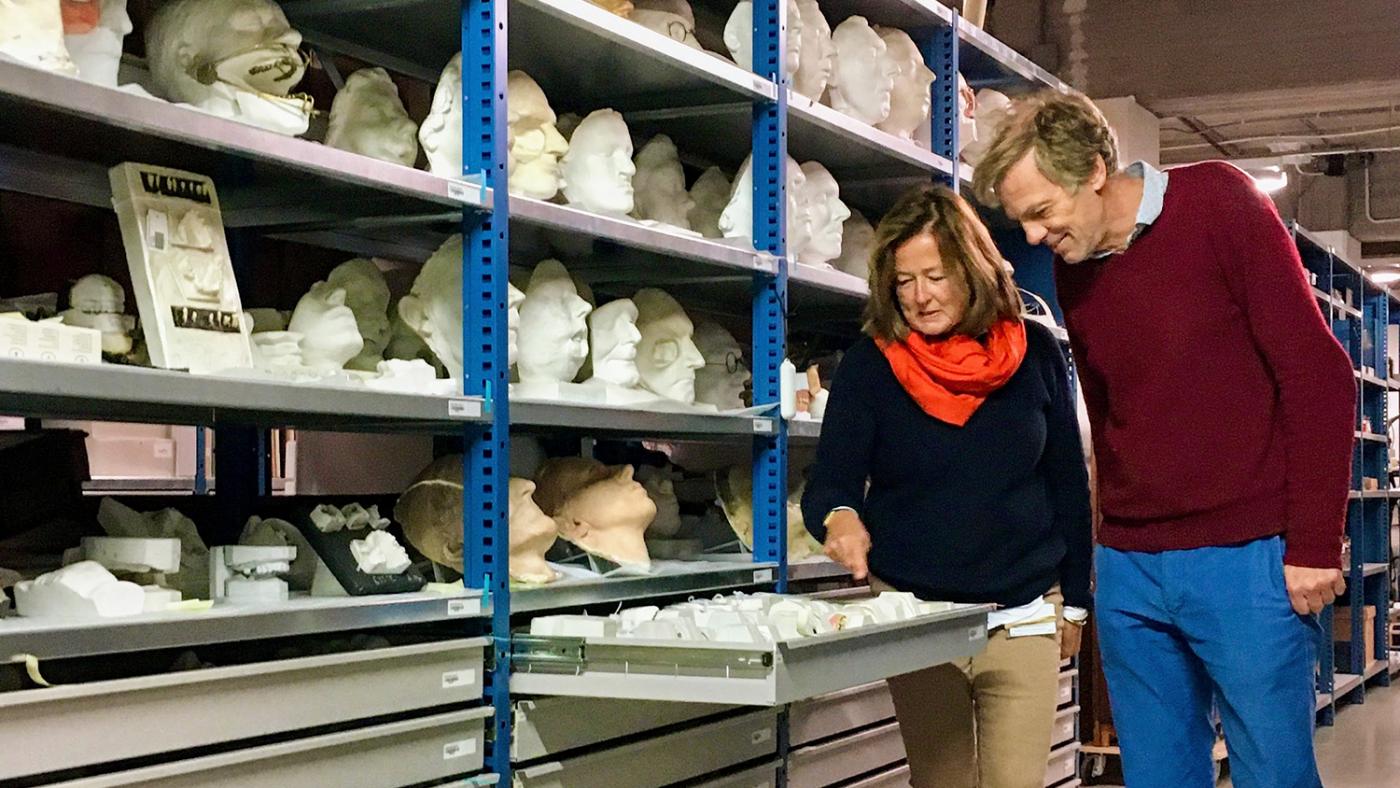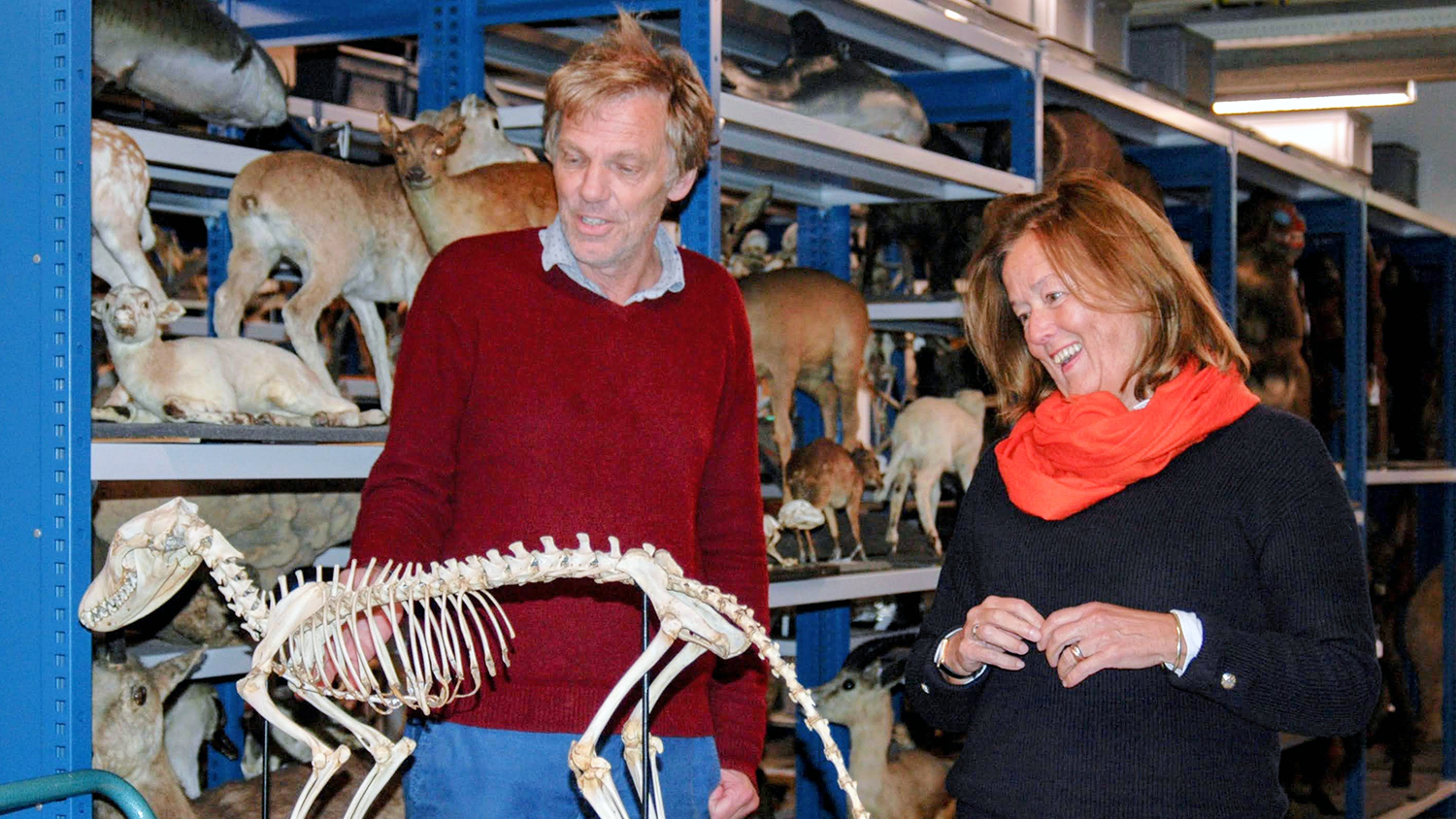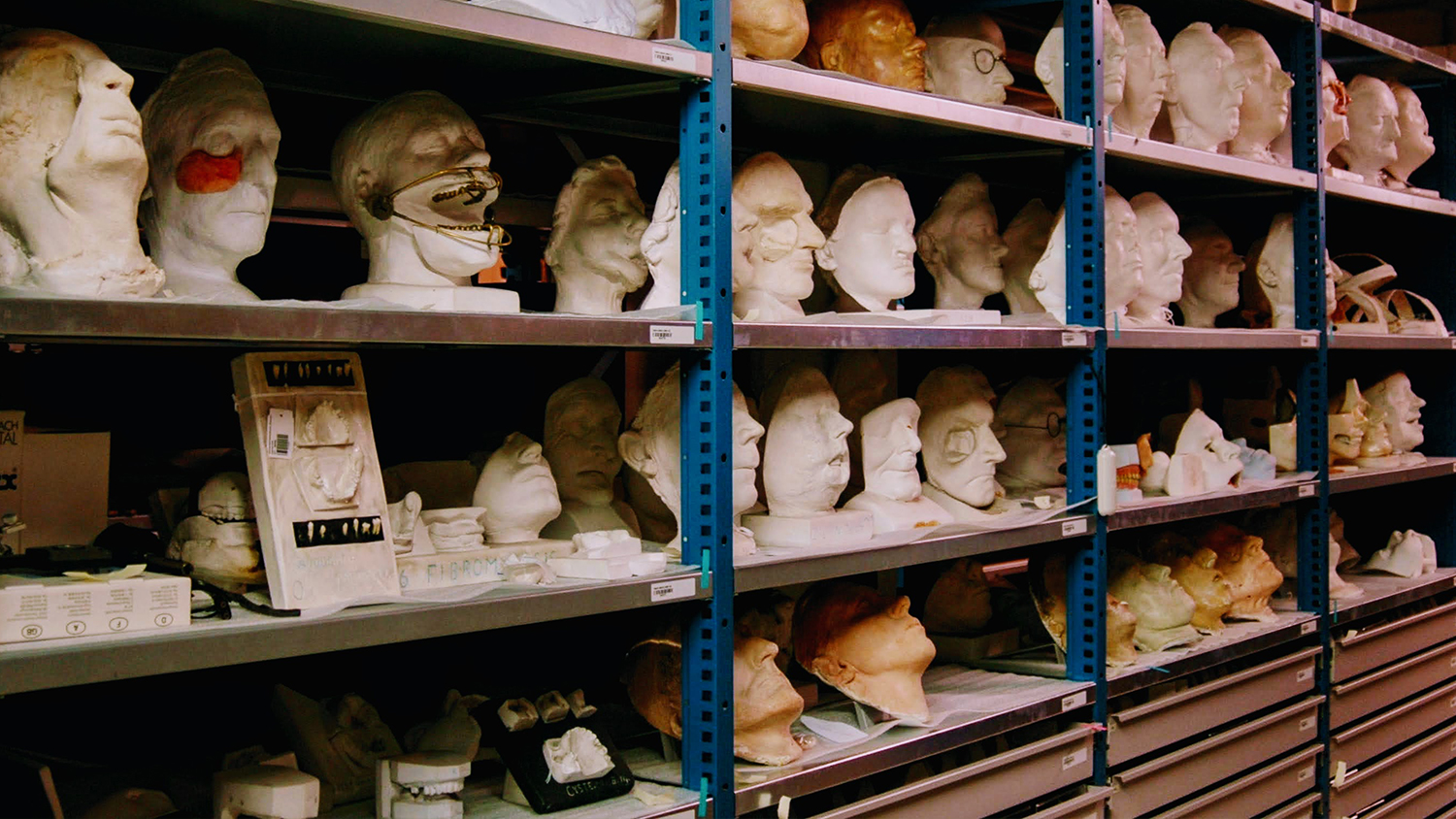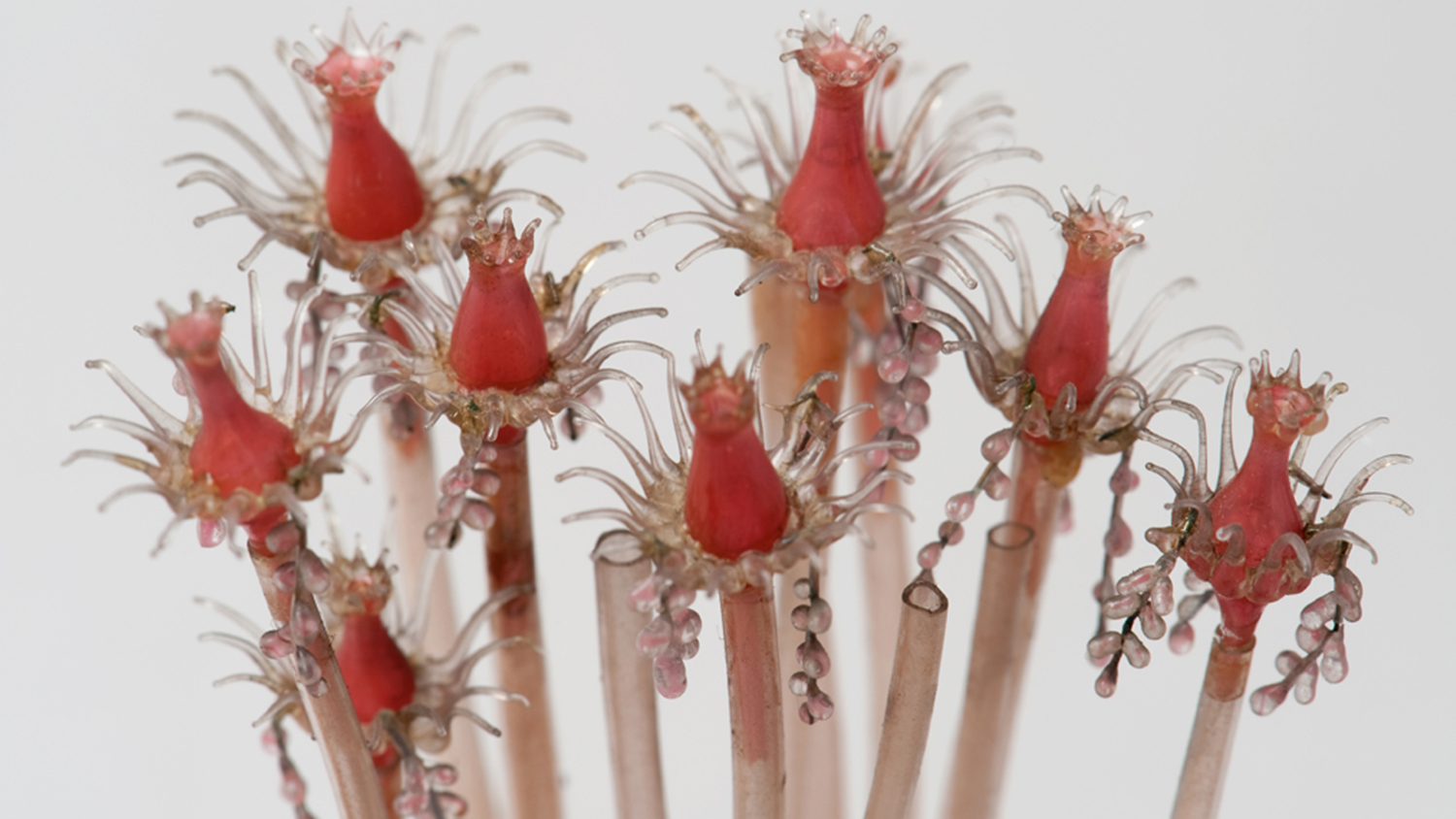From visitor to researcher: the new University Museum changes course

The Caroline Bleeker building at the Sorbonnelaan in Utrecht does not particularly invite close inspection. Even the pictures on the UU’s website don’t try to prettify it. Bricks, some green and concrete give the distinct impression of a distribution center. Small electrical vans are parked neatly in front of the building, while an open door offers a view of the loading bay. There is nothing here to indicate that the basement of this monument to sixties architecture houses the treasures of the University Museum Utrecht (UMU).
Up the stairs, through the double doors and down a long staircase, Marieke Verhoeven, Marketing & Communication consultant of the UMU, walks in the direction of the underground passageways. No daylight enters here; the place is lit by fluorescent lights instead. “We expect that the construction work on the museum will be finished by the end of January. Then all employees can move back to the building at the Lange Nieuwstraat”, a hopeful Verhoeven says. “The depot will remain here.”
The design of the new UMU took a few years, but construction was finally able to start in 2021. All employees moved to different locations in the UU. The museum objects were put in the depot, which now houses some 200.000 objects. Some of these objects will be put on display again in new exhibits, but many will remain concealed.
A world underground
In one of the underground hallways, we meet conservators Reina de Raat and Paul Lambers. The UMU has five depots, of which four are located on the Utrecht Science Park grounds. Of these, three are housed in the Caroline Bleekergebouw, where De Raat and Lambers are stationed. They will recommend which objects will be put back on display at the museum.
Equipped with latex gloves, Lambers opens the airtight blue door to the first depot. With one foot over the threshold, De Raat and Lambers turn into walking guideposts, illuminating the maze of hallways and closets which can only be described as every cleaner’s nightmare, and every collector’s dream.
“With 200.000 objects, choices are difficult”, both conservators lament. However, Lamers thinks they both have a clear picture of what they want to exhibit in the new collection. “The museum will have five galleries, that for now have the working titles ‘Human and design’, ‘Comparing humans and animals’, ‘Earth and establishing links’, ‘Experimenting in the material world’ and ‘Human and society’. With those galleries we’ll exhibit the scientific process, but in a different way than we used to.”

Paul Lambers and Reina de Raat in the Caroline Bleeker building. Photo: Martine Jansen
The Netherlands’ quintessential research museum
The research projects that were performed in Utrecht in the 19th and 20th century are still major fields within the university, and have shaped the choices made for the new collection. By joining Utrecht’s scholarly pioneers with its modern research, and by actively including visitors, the UMU wants to become the Netherlands’ quintessential research museum.
“We chose objects that show how the research was executed and how it is done today, and we have devised related activities. Visitors should feel as though they become a bit of a researcher themselves,” De Raat explains. “Aside from that, the research must have originated in Utrecht. We could have involved dinosaurs, but that is Naturalis’s job”, Lambers chuckles. “It should be unique to Utrecht, nowhere else in the world but here.”
De Raat resolutely walks towards a cabinet with plaster casts. Dejected eyes in white faces stoically stare into space. One has a hole, another lacks a nose and a third is covered in hardware. The heads came from the collection of Utrecht’s first female lector in prosthetic dentistry, Jansje Gretha Schuiringa, and will be part of the permanent collection for the first time.
An essential part, De Raat thinks. “Schuiringa became a dentist in 1913 and helped people with facial defects by developing working parts that could be interconnected to form a working prosthetic. Before, these casts didn’t fit the museum, but now that ‘Humans’ will become an important part of the exhibits, other essential parts of the scientific process, like creativity, will get their turn. Schuiringa and her research are an excellent fit. She had to be creative to be able to help these people.”

Photo: Martine Jansen
Scientific wisdom is for adults too
To develop the new approach, a team of conservators, educationists, project leaders and museum employees were inspired by Dublin’s Science Gallery and the University Museum in Ghent, among others. “But the UMU wants to be unique as well,” communication advisor Verhoeven says. “What can we do differently? We wanted to devise something that had not been done before. Eventually we landed on a form of ‘scientific wisdom’: including visitors in the steps scientists take when doing their research. What questions do they ask? We wanted to give them a glimpse behind the scenes, instead of just showing them the end result.”
With that glimpse, ‘families with children aged between 8 and 14’ are the central target audience. “Viewing and doing this together works really well,” Verhoeven says, “but one should also be able to visit the UMU on their own.” It will not become a children’s museum, conservator Lambers says. “The new museum should still fascinate individual visitors, and the collections should be able to be viewed without taking part in the interactive elements. You should be able to walk through it and make up your own mind.”
“How was research performed differently back then? How is it done now? Those are the kinds of questions we want to evoke in visitors,” project leader of the renewal at UMU Aniek Bax explains enthusiastically. This is why the Museum intends to put scientists on display, which is less exhibitionistic than it may sound. “There will be a noise free research space, where scientist are busy with their studies”, Bax says. “Visitors can ask questions and help on the spot.”
The museum will also shed light on all of the university’s science. “Of course we’ve looked at the things we did well in the past, but we’re also looking at what is relevant to society today. For that reason, we’ve broadened our subjects. We don’t just look at beta sciences; humanities, social and behavioral sciences are represented better now.”
The new ideas have asked a lot of the project team. Research is complicated, how can you explain it concisely? How can you shape it so it is understandable for every visitor? And how do you design it so that visitors will want to take part themselves? The answer to these questions can be found in a white cardboard box on Bax’s desk. This ‘mystery box’, which measures 15 centimeters in every direction, a prototype still, will guide visitors through the museum. From atop small pillars, it will invite visitors to find out what it contains. The mystery box can be touched, sniffed and picked up, but it cannot be opened. “All five of the galleries will show visitors different ways to find out what is in the box, but the actual answer will remain a secret,” Bax describes.
Full of expectations
Back in the depot, conservator Lambers is rushing to a bookcase filled with glass objects. “We’ll show all kinds of appropriate things about science, but some objects will be exhibited just because they’re beautiful,” he explains, beaming. He points at the top shelf, where small glass models of marine animals and mollusks, commonly called Blaschka’s, are shining in blue, purple and soft pink. Father and son Blaschka made over 10.000 of these detailed underwater creatures for natural history museums and education institutions in the 19th century. In doing so, they were unique in bringing the anatomy of these invertebrate marine animals to the public. The UMU possesses the only collection in the Netherlands. The Blaschka’s will have a prominent place in the new exhibit. “They have always been in the museum, but they were placed pretty miserably then,” Lambers admits. “Now they will be properly lit in the ‘Comparing humans and animals’ gallery, where they can be admired by everyone.”

Glas model of a tubular polyp. Photo: Peter Rothengatter, HetFotoAtelier
Around April 2022, De Raat and Lambers hope to fill the museum with everything they have selected. In December this should be followed by a spectacular opening ceremony. “One that cannot be ignored,” project leader Bax laughs, “that is our intention.” In the meantime, the museum is organizing a lot of activities for the public that are currently unable to visit. They offer education on site, organize fossil scavenger hunts in the city and guided tours in the depot. They have also launched an online version of the museum, keep in touch with schools and have asked other university museums like Rijksmuseum Boerhave in Leiden for advice. All of these efforts are to ensure visibility. “With all of those endeavors, I’m not afraid people will have forgotten about us”, Bax says.
Underground, conservators De Raat and Lambers flit from one bookcase to another, pointing to machines, instruments, working parts and stuffed creatures. The heart-lung machine made by Utrecht’s professor Jacob Jongbloed from a bicycle chain, the 19th century measuring devices used in a study of the speed of sound, the instruments that made professor Franciscus Cornelis Donders famous all around the world. Every object has a story that will find its way to the renewed museum. If it were up to De Raat en Lambers, that will happen sooner rather than later. Until then, they will keep darting around, full of expectations.